Samsung Galaxy S23 vs iPhone 14 Pro - compared
Samsung has released its answer to the iPhone 14 Pro and other smartphones. Here's how the Galaxy S23 compares against the iPhone 14 Pro.
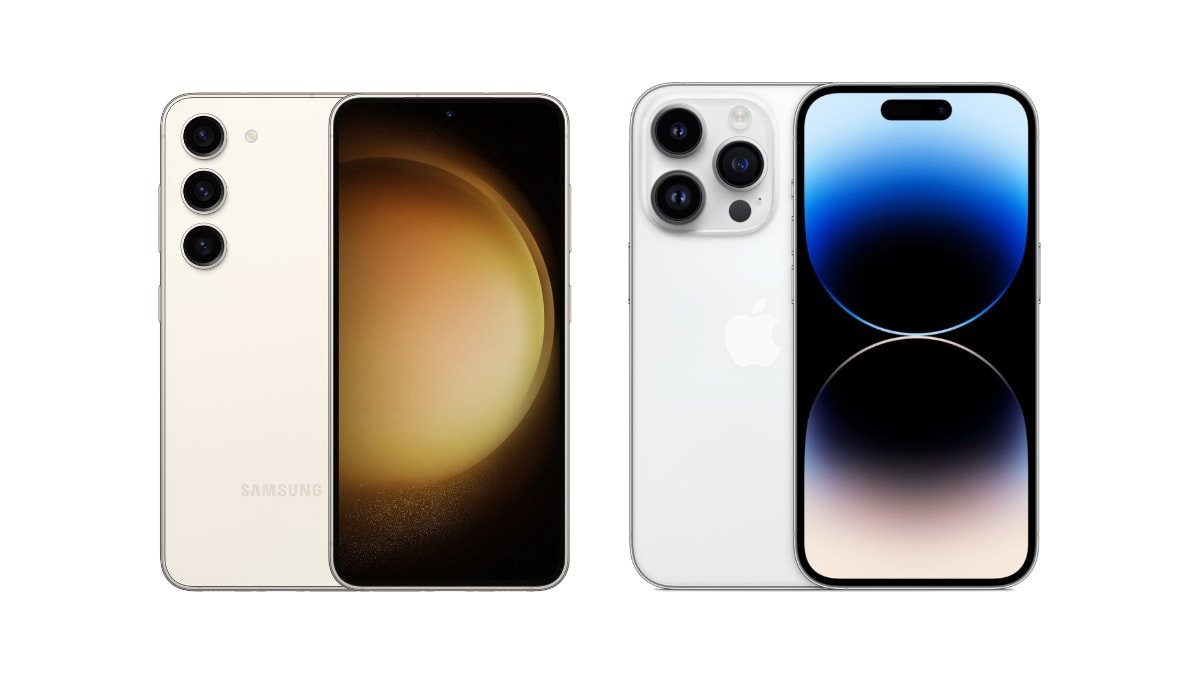
Galaxy S23 vs iPhone 14 Pro
Samsung has officially introduced its new array of smartphones, which includes the Galaxy S23, Galaxy S23+, and Galaxy S23 Ultra, a few months after Apple released its iPhone 14 lineup.
The firm unveiled the new gadgets on February 1 during its Unpacked event, as it does every year during the first quarter of a year. As expected, the most recent versions offer several enhancements and additions over the 2022 Galaxy line.
Despite being the entry-level model in the Samsung lineup, the Galaxy S23 is comparable to the iPhone 14 Pro in some ways.
It's an always-on display with ProMotion technology that has adaptive refresh rates up to 120Hz, and a contrast ratio of 2,000,000:1. The iPhone also has a max brightness of 1,000 nits, 1,600 brightness for HDR content, and it can push to 2,000 nits peak brightness outdoors.
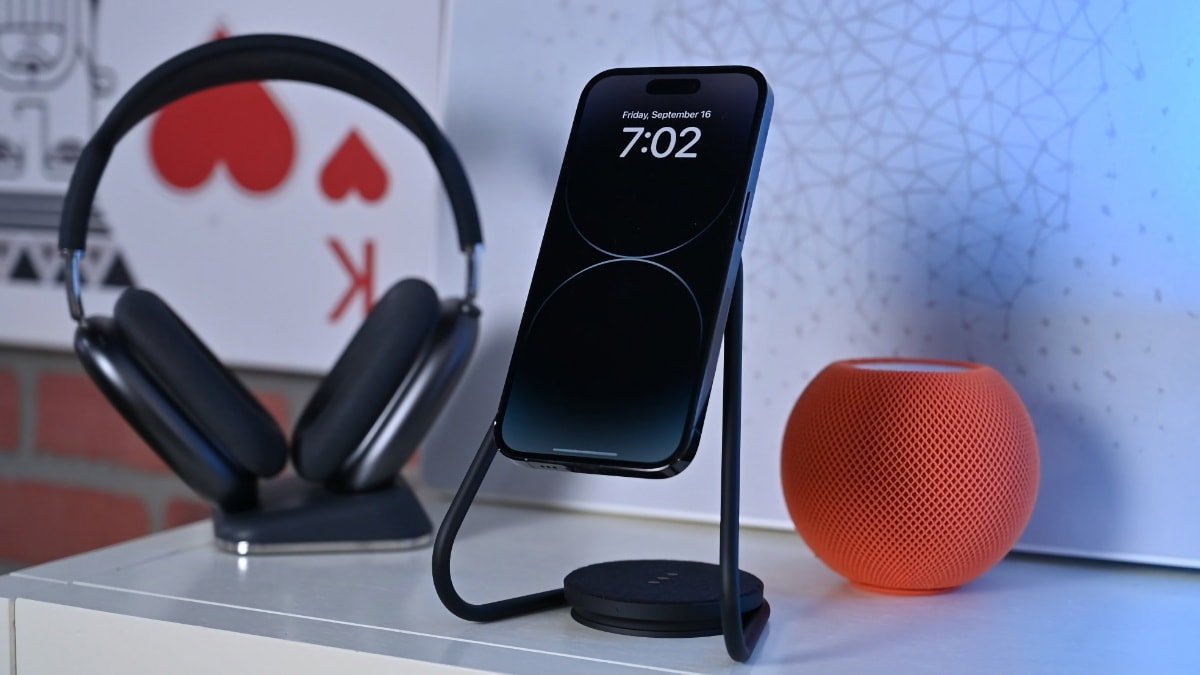
A Super Retina XDR Display using OLED technology is found on the iPhone 14 Pro
The Galaxy S23 display is 6.1 inches, with a resolution of 2,340 by 1,080 pixels and a density of 425 pixels per inch. Unlike the iPhone 14 Pro, Samsung uses Dynamic AMOLED 2X technology in the Galaxy S23 display. But it similarly offers refresh rates at up to 120Hz, and a touch sampling rate of 240Hz in Game Mode.
As a type of OLED display, AMOLED technology offers a few advantages, such as consuming less power and showing more vibrant colors. These displays are also thinner and more flexible, as evident in Samsung's folding smartphones.
However, AMOLED technology tends to be more expensive than OLED and is less visible in direct sunlight. The iPhone's display can reach 2,000 nits in outdoor settings, giving it an advantage over the Galaxy S23.
It offers improvements in artificial intelligence, such as up to 4.35x faster performance than the previous generation.

For instance, Qualcomm built its first camera processor with artificial intelligence into the chip. Its image signal processor supports 8K video capture in 10-bit HDR and photo capture at up to 200 megapixels.
Similar to Apple's computational photography process, the Snapdragon 8 has Real-Time Semantic Segmentation. During processing, the chip can independently apply different noise reduction, sharpening, and color correction levels in up to eight photo layers.
Qualcomm has also added Bokeh Engine 2 to the new processor, which can adjust the blurred background's quality, intensity, and shape in portrait-style images and videos. Other enhancements in the photography features include greater local tone mapping, improved image stabilization, and updated auto exposure, compared to the Snapdragon 8 Gen 1.
On Apple's side, an A16 Bionic chip powers the iPhone 14 Pro, and the CPU of six cores has four for efficiency and two for performance. It also has a 16-core Neural Engine capable of nearly 17 trillion operations per second, and a 5-core GPU.
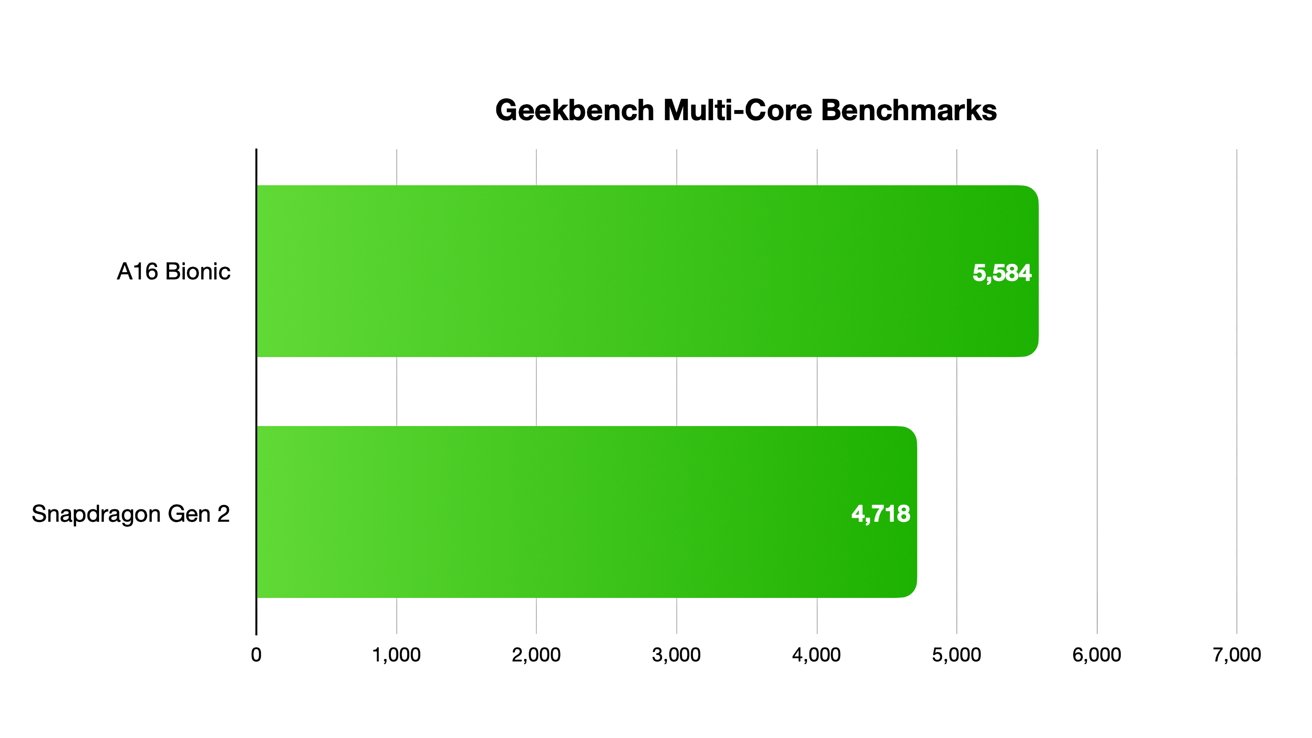
Benchmarks for A16 Bionic on an iPhone 14 Pro show a single-core score of 1,882 and a multi-core score of 5,584.
Benchmarks for the Galaxy S23 have yet to be released, but CPU scores leaked in February. The Galaxy S23 showed that it managed 1,473 in single-core performance and 4,718 for multi-core performance.
Those scores bring it into the vicinity of the A16 Bionic, although real-world usage will provide a better idea of how it fares against Apple's optimized chip design for its software and hardware.
Geekbench shows a Metal score of 15,386 for the A16 Bionic chip found inside the iPhone 14 Pro. Although the Galaxy S23 doesn't have GPU scores yet, some benchmarks show it exceeding the A16 in some charts, but falling behind in others. For example, while it doesn't list numbers, the chart for 3DMark Wild Life Extreme Unlimited shows the two chips pretty close in score.
The Galaxy S23's battery has a 3,900mAh capacity, and its battery life will be known once reviewers test it.
Although Samsung's smartphone has a higher capacity than the iPhone 14 Pro, it may not necessarily beat it based on specs alone. Apple's A-series of processors tend to perform better than Snapdragon, including power efficiency.
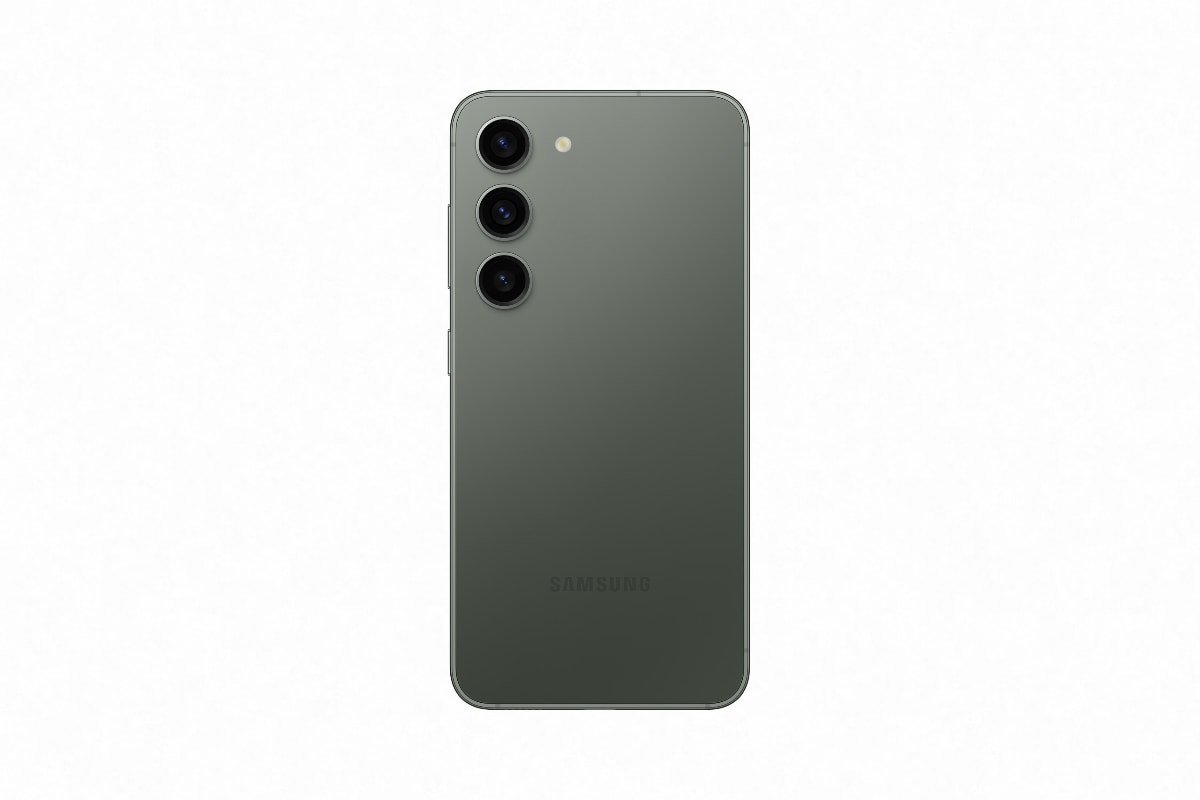
The Galaxy S23's battery has a 3,900mAh capacity
Apple claims that the iPhone 14 Pro can reach up to a 50% battery charge in 30 minutes when using a 20W or higher charging adapter. Samsung lists similar charging for the Galaxy S23, except it requires a 25W charger to meet 50% battery in 30 minutes.
Cables are another difference, as the Galaxy S23 has a USB-C port, and the iPhone 14 Pro has a Lightning port.
With MagSafe on the iPhone 14 and Qi on the Galaxy S23, both smartphones have the option of wireless charging. MagSafe, at 15W of power, can charge an iPhone 14 Pro in roughly two hours.
Fast-charging time isn't known yet for the Galaxy S23, but Samsung's Fast Charging 2.0 reaches around the same time, as seen in some reviews.
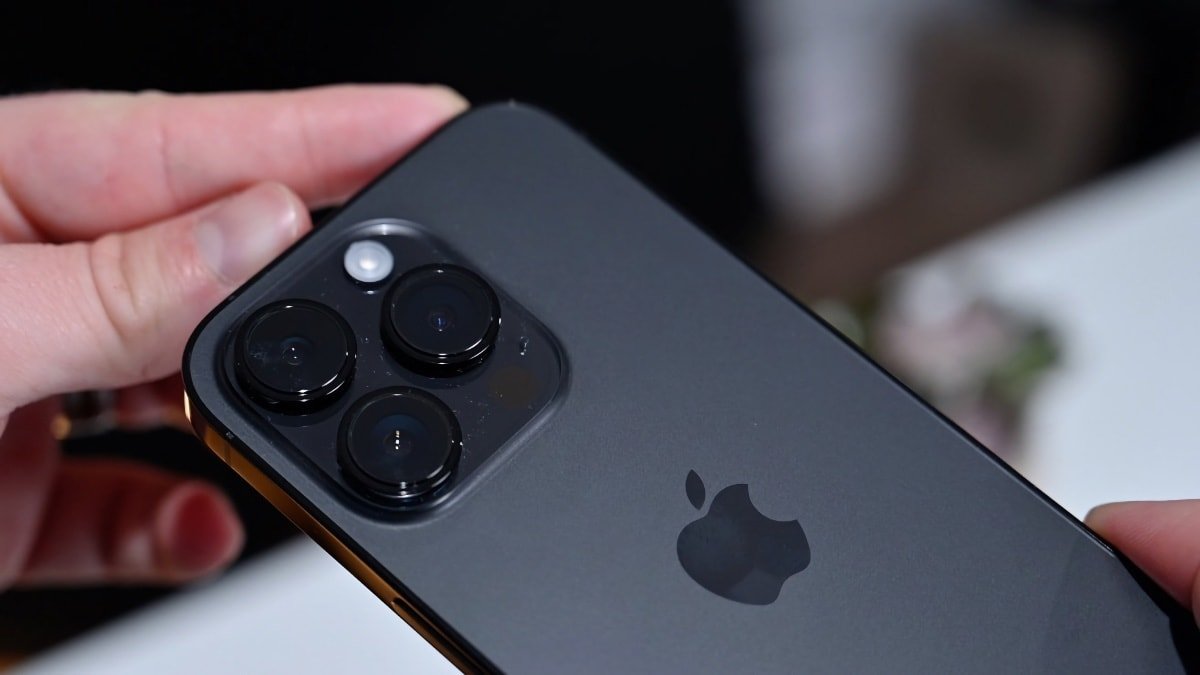
Apple made several updates to the camera system when it debuted the iPhone 14 Pro
Apple made several updates to the camera system when it debuted the iPhone 14 Pro. For example, a new Photonic Engine significantly improves low-light performance in photos across all the cameras.
It applies the Deep Fusion computational photography earlier in the imaging process to preserve textures and details and offers improved color. The iPhone 14 Pro also introduces a 48MP 24mm Main camera with a quad-pixel sensor and f/1.78 aperture.
For most photos, the quad-pixel sensor combines every four pixels into one sizeable quad-pixel equivalent to 2.44 microns, resulting in better low-light capture. The sensor also benefits pro workflows, optimizing for detail in ProRAW.
The quad-pixel sensor also allows for a 2x Telephoto option on the 48MP camera, which employs the center 12 megapixels of the sensor to produce 4K films and full-resolution images without using digital zoom.
The new 12MP Ultra Wide camera on the iPhone 14 Pro has 1.4-micron pixels, improving macro photography capabilities by producing crisper, more detailed photographs. The aperture of the camera is f/2.2 with a 120-degree field of view.
The 12MP Telephoto camera on the iPhone 14 Pro has an f/2.8 aperture and a 3x optical zoom range. Additionally, a new TrueDepth camera system on the front sports an f/1.9 aperture for improved low-light selfie and video performance and brings autofocus in the front camera for the first time.
Meanwhile, the Galaxy S23 starts with 128GB of storage at $799 with an upgrade to 256GB for $859, which is less expensive than Apple's upgrade options.
The iPhone 14 Pro comes in Silver, Space Black, Gold, and Deep Purple. On the Samsung side, the S23 color options are Green, Lavender, Phantom Black, and Cream.
While supplies last, Samsung also offers Graphite and Lime colors for the handset. Another limited-time feature is a free upgrade to 256GB of storage when customers preorder the device.
However, another factor to consider is the iPhone 14 Pro, with more storage options for high-quality photos and videos. Higher storage is mainly for people who like to keep their files offline on their devices instead of offloading them to the cloud.
Processing on each device is pretty similar, and the Galaxy S23 doesn't fall too far behind the iPhone 14 Pro. But, of course, Apple optimizes its entire stack of hardware, software, and chips to work efficiently together.
The Galaxy S23 is a worthy opponent, and those who are platform-agnostic and don't make a fuss about the operating system may consider it a worthwhile purchase. It's also more affordable than the iPhone 14 Pro at $799, although wireless carrier incentives are offering deals on Apple's iPhone.
Buyers can preorder the Galaxy S23 now, and it starts shipping on February 17.
Read on AppleInsider

Galaxy S23 vs iPhone 14 Pro
Samsung has officially introduced its new array of smartphones, which includes the Galaxy S23, Galaxy S23+, and Galaxy S23 Ultra, a few months after Apple released its iPhone 14 lineup.
The firm unveiled the new gadgets on February 1 during its Unpacked event, as it does every year during the first quarter of a year. As expected, the most recent versions offer several enhancements and additions over the 2022 Galaxy line.
Despite being the entry-level model in the Samsung lineup, the Galaxy S23 is comparable to the iPhone 14 Pro in some ways.
Galaxy S23 versus iPhone 14 Pro - Specifications
| Specifications | Samsung Galaxy S23 | iPhone 14 Pro |
|---|---|---|
| Price (starting) | $799.00 Buy at Samsung | $999.00 Check prices |
| Dimensions (inches) | 5.76 x 2.79 x 0.3 | 5.81 x 2.81 x 0.31 |
| Weight (ounces) | 5.93 | 7.27 |
| Processor | Qualcomm Snapdragon 8 (Gen 2) | A16 Bionic |
| Storage | 128GB 256GB | 128GB 256GB 512GB 1TB |
| Display | 6.1 Dynamic AMOLED 2X | 6.1 Super Retina XDR |
| Resolution | 2340 x 1080 at 425ppi | 2556 x 1179 at 460 |
| Biometrics | Face Detection | Face ID |
| Connectivity | Bluetooth 5.3 Wi-Fi 6E | Bluetooth 5.3 Wi-Fi 6 |
| Rear Cameras | 50MP Wide 12MP Ultra Wide 10MP Telephoto | 48 Main 12MP Ultra Wide 12MP Telephoto |
| Front Camera | 12MP | 12MP TrueDepth |
| Battery | 3,900mAh | 3,200mAh |
| Colors | Phantom Black Cream Green Lavender | Space Black Silver Gold Deep Purple |
Galaxy S23 versus iPhone 14 Pro - Display
A Super Retina XDR Display using OLED technology is found on the iPhone 14 Pro, which has a pixel density of 460 and a resolution of 2,556 by 1,179.It's an always-on display with ProMotion technology that has adaptive refresh rates up to 120Hz, and a contrast ratio of 2,000,000:1. The iPhone also has a max brightness of 1,000 nits, 1,600 brightness for HDR content, and it can push to 2,000 nits peak brightness outdoors.

A Super Retina XDR Display using OLED technology is found on the iPhone 14 Pro
The Galaxy S23 display is 6.1 inches, with a resolution of 2,340 by 1,080 pixels and a density of 425 pixels per inch. Unlike the iPhone 14 Pro, Samsung uses Dynamic AMOLED 2X technology in the Galaxy S23 display. But it similarly offers refresh rates at up to 120Hz, and a touch sampling rate of 240Hz in Game Mode.
As a type of OLED display, AMOLED technology offers a few advantages, such as consuming less power and showing more vibrant colors. These displays are also thinner and more flexible, as evident in Samsung's folding smartphones.
However, AMOLED technology tends to be more expensive than OLED and is less visible in direct sunlight. The iPhone's display can reach 2,000 nits in outdoor settings, giving it an advantage over the Galaxy S23.
Galaxy S23 versus iPhone 14 Pro - Processor
The second-generation Qualcomm Snapdragon 8 powers the Galaxy S23 with four performance cores and three efficiency cores. It also has an Adreno GPU with hardware-accelerated ray tracing for gaming for better lighting, shadows, and illumination effects.It offers improvements in artificial intelligence, such as up to 4.35x faster performance than the previous generation.

For instance, Qualcomm built its first camera processor with artificial intelligence into the chip. Its image signal processor supports 8K video capture in 10-bit HDR and photo capture at up to 200 megapixels.
Similar to Apple's computational photography process, the Snapdragon 8 has Real-Time Semantic Segmentation. During processing, the chip can independently apply different noise reduction, sharpening, and color correction levels in up to eight photo layers.
Qualcomm has also added Bokeh Engine 2 to the new processor, which can adjust the blurred background's quality, intensity, and shape in portrait-style images and videos. Other enhancements in the photography features include greater local tone mapping, improved image stabilization, and updated auto exposure, compared to the Snapdragon 8 Gen 1.
On Apple's side, an A16 Bionic chip powers the iPhone 14 Pro, and the CPU of six cores has four for efficiency and two for performance. It also has a 16-core Neural Engine capable of nearly 17 trillion operations per second, and a 5-core GPU.

Benchmarks for A16 Bionic on an iPhone 14 Pro show a single-core score of 1,882 and a multi-core score of 5,584.
Benchmarks for the Galaxy S23 have yet to be released, but CPU scores leaked in February. The Galaxy S23 showed that it managed 1,473 in single-core performance and 4,718 for multi-core performance.
Those scores bring it into the vicinity of the A16 Bionic, although real-world usage will provide a better idea of how it fares against Apple's optimized chip design for its software and hardware.
Geekbench shows a Metal score of 15,386 for the A16 Bionic chip found inside the iPhone 14 Pro. Although the Galaxy S23 doesn't have GPU scores yet, some benchmarks show it exceeding the A16 in some charts, but falling behind in others. For example, while it doesn't list numbers, the chart for 3DMark Wild Life Extreme Unlimited shows the two chips pretty close in score.
Galaxy S23 versus iPhone 14 Pro - Battery
With a 3,200mAh battery, the iPhone 14 Pro can run up to 23 hours of video playback and up to 20 hours of streamed video. It can deliver up to 75 hours of audio playback, however.The Galaxy S23's battery has a 3,900mAh capacity, and its battery life will be known once reviewers test it.
Although Samsung's smartphone has a higher capacity than the iPhone 14 Pro, it may not necessarily beat it based on specs alone. Apple's A-series of processors tend to perform better than Snapdragon, including power efficiency.

The Galaxy S23's battery has a 3,900mAh capacity
Apple claims that the iPhone 14 Pro can reach up to a 50% battery charge in 30 minutes when using a 20W or higher charging adapter. Samsung lists similar charging for the Galaxy S23, except it requires a 25W charger to meet 50% battery in 30 minutes.
Cables are another difference, as the Galaxy S23 has a USB-C port, and the iPhone 14 Pro has a Lightning port.
With MagSafe on the iPhone 14 and Qi on the Galaxy S23, both smartphones have the option of wireless charging. MagSafe, at 15W of power, can charge an iPhone 14 Pro in roughly two hours.
Fast-charging time isn't known yet for the Galaxy S23, but Samsung's Fast Charging 2.0 reaches around the same time, as seen in some reviews.
Galaxy S23 versus iPhone 14 Pro - Cameras
The Galaxy S23's primary camera system consists of a 50-megapixel wide camera with f/1.8 aperture, a 12-megapixel ultra-wide lens with f/2.2 aperture, and a 10-megapixel telephoto lens with f/2.4 aperture and 3x optical zoom. Its front camera boasts a 12-megapixel lens with an f/2.2 aperture.
Apple made several updates to the camera system when it debuted the iPhone 14 Pro
Apple made several updates to the camera system when it debuted the iPhone 14 Pro. For example, a new Photonic Engine significantly improves low-light performance in photos across all the cameras.
It applies the Deep Fusion computational photography earlier in the imaging process to preserve textures and details and offers improved color. The iPhone 14 Pro also introduces a 48MP 24mm Main camera with a quad-pixel sensor and f/1.78 aperture.
For most photos, the quad-pixel sensor combines every four pixels into one sizeable quad-pixel equivalent to 2.44 microns, resulting in better low-light capture. The sensor also benefits pro workflows, optimizing for detail in ProRAW.
The quad-pixel sensor also allows for a 2x Telephoto option on the 48MP camera, which employs the center 12 megapixels of the sensor to produce 4K films and full-resolution images without using digital zoom.
The new 12MP Ultra Wide camera on the iPhone 14 Pro has 1.4-micron pixels, improving macro photography capabilities by producing crisper, more detailed photographs. The aperture of the camera is f/2.2 with a 120-degree field of view.
The 12MP Telephoto camera on the iPhone 14 Pro has an f/2.8 aperture and a 3x optical zoom range. Additionally, a new TrueDepth camera system on the front sports an f/1.9 aperture for improved low-light selfie and video performance and brings autofocus in the front camera for the first time.
Galaxy S23 versus iPhone 14 Pro - Pricing
Pricing for the iPhone 14 Pro starts at $999 with 128GB of storage with upgrade options for 256GB at $1,099, 512GB for $1,299, and 1TB for $1,499 at the highest tier.Meanwhile, the Galaxy S23 starts with 128GB of storage at $799 with an upgrade to 256GB for $859, which is less expensive than Apple's upgrade options.
The iPhone 14 Pro comes in Silver, Space Black, Gold, and Deep Purple. On the Samsung side, the S23 color options are Green, Lavender, Phantom Black, and Cream.
While supplies last, Samsung also offers Graphite and Lime colors for the handset. Another limited-time feature is a free upgrade to 256GB of storage when customers preorder the device.
Galaxy S23 versus iPhone 14 Pro - What to Buy
The larger 50MP sensor on the Galaxy S23 may tempt some mobile photographers. The architecture on the chip powers real-time Semantic Segmentation to recognize and optimize each aspect within a frame -- like faces, hair, clothes, and backgrounds -- during the capturing process.However, another factor to consider is the iPhone 14 Pro, with more storage options for high-quality photos and videos. Higher storage is mainly for people who like to keep their files offline on their devices instead of offloading them to the cloud.
Processing on each device is pretty similar, and the Galaxy S23 doesn't fall too far behind the iPhone 14 Pro. But, of course, Apple optimizes its entire stack of hardware, software, and chips to work efficiently together.
The Galaxy S23 is a worthy opponent, and those who are platform-agnostic and don't make a fuss about the operating system may consider it a worthwhile purchase. It's also more affordable than the iPhone 14 Pro at $799, although wireless carrier incentives are offering deals on Apple's iPhone.
Buyers can preorder the Galaxy S23 now, and it starts shipping on February 17.
Read on AppleInsider

Comments
ANYTHING above the price of free for an android phone is too much. Especially one that’s late to the party and still loses.
Somehow you have the mental capacity to find your way to this forum but still can't make a rational comment to save your life. 🤦♂️
The main lens: "I have simply never gotten image quality like this out of a phone."
The UWA: "Corners are still highly distorted and soft at times, despite excellent automatic processing from the system to prevent it from looking too fish-eye like"
Would a similar comparison for the S23 be helpful...?
samsung clearly benefits from their wider portfolio of engineering components such as screens. It does feel like the gap has closed though and Apple is in parity.
overall healthy competition for Apple while reinforcing Apples lead and end to end ecosystem advantage.
Hopefully the compute edge will increasingly translate into software advantage and it does feel like Apples silicon team is executing better and faster than the iOS team. Hard challenge to overcome and may be a worth while investment to double down on software dev capacity and experimentation.
As for crying about being insulted, maybe you should read what you write and then edit before attacking others. OK, boomer?
- 1x Cortex X3
- 2x Cortex A715
- 2x Cortex A710
- 3x Cortex A510
I'd also note, the processor in the S23 isn't a standard "Snapdragon 8 Gen 2", it's a higher binned chip, the "Snapdragon 8 Gen 2 for Galaxy" which also has higher clock speeds.Snapdragon 8 Gen 2:
- CPU @ 3.2 GHz
- GPU @ 680 MHz
Snapdragon 8 Gen 2 for Galaxy:- CPU @ 3.35 GHz
- GPU @ 720 MHz
Qualcomm is still using stock ARM cores, their NUVIA cores have yet to make their debut.In terms of GPU, the non-Galaxy Snapdragon 8 Gen 2 is already ahead of the A16, so not much needs to be said there:
The S23 phones should be able to support Snapdragon Satellite when it's available later this year.